After 10 days of walking, I come to a small town in Spain called Belorado. The day before, I had walked a gruelling 31 kilometres up and down hills, in warm and sunny spring weather. Maybe it’s the long walk and my feet are tired, or, maybe it’s the constant climbing up and down the hills, but something feels different under my left foot. I get to my hostel and take my walking shoes off to find a blister has formed under my foot. It’s a bad one!
As usual, after a long day of walking, I take my shoes and socks off, put on my sandals, and I relax a bit. Time for a warm shower to wash off all that sweat. As usual, I do my laundry, hanging my clothes on the line to dry. Having only two sets of clothes forces you to do laundry most days. Once the “chores” are done, I relax with my fellow pilgrims, or I do my nightly journaling, or I do my daily blogging. My whole body is tired, so I don’t notice my feet much, but eventually I realize that my foot is telling me something. It hurts!
I twist my leg up to take a look in the mirror. Sure enough, there is a big bad blister under my foot, and it looks terrible. This can’t be happening, not 10 days into my walk. My body is just getting used to the daily walking, and I’m supposed to Skype with my family tonight—what am I going to tell them? Does this mean that my walk is over? I don’t want to end my pilgrimage now! I decide to keep this “news” from my family back home and see what tomorrow brings. Maybe I can just bandage up my foot and keep walking (or is it hobbling?).
The decision to walk the pilgrimage trail called Camino de Santiago (the Way of St. James), in northern Spain, seemed like a good idea at the time. I enjoy a good physical challenge, and I’ve never tested my body like this before. God has given me a relatively healthy body and mind, so why not celebrate the fact that I just turned 60 years old by going on a long walk? I realize that it will be more than a physical challenge—it will also be a spiritual challenge. Walking eight hours a day in the sun, or rain, or wind, or cold will surely teach me some life lessons. I wanted to listen for God’s voice along the way. I wanted to learn how to walk prayerfully.
On April 30, 2014, I started out on my 800-kilometre journey in a town called Saint Jean Pied de Port, just inside France, along the border of Spain. I chose to be a pilgrim, to walk along an ancient pilgrimage route to the city of Santiago de Compostela, to the cathedral that is said to hold the bones of the Apostle James, Jesus’ brother. Pilgrims have walked the Camino for over 1,000 years.
An ancient proverb states, “Even the longest journey has to begin with a single step.” I took that first step with an open mind—I would let the journey leave its mark on me. I would be open to what Jesus wanted to teach me about life, about living in the now. The Camino journey is much more than getting to a destination; it is about what happens along the way.
This 34-day journey was one of the most satisfying and rewarding life experiences for me. Seldom were there days that didn’t involve climbing hills and my being very tired after the day’s walk. But every day also had unforeseen blessings. I was constantly inspired by the people with whom I shared the trail. Each person had their own story, their own reasons for walking to Santiago.
One of the first lessons I needed to learn was patience. Each day’s walk is between 20 and 32 kilometres long and must be walked by simply placing one foot in front of the other. There would always be faster walkers and slower walkers than me. The important thing was to keep moving forward.
The first day walking out of Saint Jean Pied de Port, I was full of excitement. This first stage is 27 kilometres long, and it includes a very steep uphill and then a steep downhill section, over the Pyrenees Mountains. At first, my pace was quick, and my thought was that I could do this first day quickly. How wrong I was! The initial excitement soon wore off, and I realized that the climb was taking a toll on me. I stopped for coffee about a third of the way up the hill and tried to recuperate. I was going too fast and needed to be more patient. Just put one foot in front of the other, I started telling myself.
As the saying goes, I needed to stop and smell the roses. Slow down enough to enjoy the moments of the journey we call life, to savor the view. Allow your daily experience to touch you deeply. Life is lived in the moments; the moments make up the days, and the days make up your life. Stop, enjoy, and savor. This life we live is not a race.
The next thing I learned was gratitude. It was amazing how grateful I was for a hot shower and something to eat at the end of that first long day. After walking 10-and-a-half hours, I was grateful for the hostel bed waiting for me, even if it was one of 150 beds all in one big hostel room. I had already met other English-speaking pilgrims, and I felt a certain connection with them already. At the end of the day, I thanked God for being with me and helping me along the way.
That first day I met Randy and Pearl, and they were fun to talk to. Once we got close to the top of the Pyrenees Mountains, it started to drizzle and became cold. I had brought along a thin pair of gloves, but my hands were not cold like Pearl’s were. She needed my gloves more than I did, so I gave them to her. That’s how the Camino experience is: if you have something extra, give it to someone who needs it more than you do. She was very thankful. At other times, I needed things that others had, and they gave these things freely to me, like an extra comb or some bandages. The spirit of giving and gratitude among the pilgrims was amazing.
The third life lesson I learned was acceptance—acceptance of other pilgrims, no matter which church they attend, and acceptance of one’s situation. Everyone walking the Camino is managing some sort of pain. Some pain you can see (such as blisters on your feet) and some you cannot see (such as coping with a recent tragedy or loss).
A middle-aged couple from Montana I met was trying to cope with the loss of their house and property, having to declare bankruptcy just recently. When both of them lost their jobs and mounting debt loaded them down, they gave up everything they had been working for, to the bank. After much struggle with what God had in mind for them to do, they took their last $5,000 and were walking the Camino to find answers. (Sadly, I lost touch with them after a few days so I don’t know whether they found what they were looking for.)
I quickly realized that there were no rich nor poor pilgrims on the Camino, or at least no one cared. Nobody cared whether you were young or old. Nobody asked what you do for a living. Everyone was on the same level—pilgrims walking on the way to our destination.
I kept bumping into certain pilgrims—two young women from Edmonton, a couple from Texas, an English-speaking German and a funny young man from Australia. Because we enjoyed each other’s company, we soon formed a group. We found out that each of us was a church attendee. I suspect that, had we discussed theology, we would have been worlds apart in our beliefs, but acceptance of each other allowed us to appreciate each other.
Throughout the long days of walking, most of the time is spent alone with your thoughts and prayers. The next life lesson was how to appreciate walking and enjoying the tranquility. I don’t usually take the time for quiet reflection each day, but when I had such wonderful quiet time for so long each day, I came to realize how many distractions there are in “normal” life. When you walk for eight hours a day, you have a lot of time to reflect, pray and meditate.
I remember one day about in the middle of my trek. I had not had a particularly good sleep the night before, and I needed to climb up and down some more hills. All morning, I had my late mother’s image in my head. By lunch time, I was too tired to eat and still had my mother in my thoughts. I sat at the table in that small restaurant and cried for about half an hour.
Why did my mother not get the chance to meet my kids—her grandkids? I missed her that day. And yet, I felt her presence with me, walking with me and encouraging me. After a good cry, I was able to keep walking, knowing that she no longer has cancer—that she will always be in my thoughts, guiding me in my life.
Lastly, I learned about simplicity. When all your possessions for the trip are strapped to your back, you tend to leave behind all those things that are not essential. Each pilgrim had only one change of clothes, a rain jacket or poncho, a jacket, a sleeping bag, a pair of good walking shoes and perhaps a pair of sandals. And that seemed to be enough.
It felt good to live simply. At the end of each day there was always a bed in a hostel and a warm shower. There was a restaurant meal each day, and friends along the way who were experiencing the same things. The walk was well marked out; all I had to do was put one foot in front of the other. There was something freeing about that.
I was constantly reminded to “let go.” When I came to a wonderful hostel where the hosts treated us well, I knew that it was going to be for one night only. Even the scenery changed from one region to the next. The Camino constantly told me, “Enjoy what you have now, but don’t hang on to it.”
Gradually, I became more aware of how much better the days went when I discarded my wants and expectations and accepted the situation for what it was. This letting go gave me peace of mind.
In the movie The Way, Martin Sheen portrays an eye doctor who travels to France to recover the body of his son who died in the Pyrenees during the first day of Camino pilgrimage. The father decides to have his son cremated and to complete the pilgrimage with his son’s ashes. While walking the Camino, the father encounters a Dutchman making the pilgrimage to lose weight, a Canadian who had endured domestic abuse and left her husband, and an Irish author suffering from writer’s block. (See a review of the film, The Way at “The attraction of walking.”)
The father begins his journey as a cold and distant man, relying on his fellow travelers for little or no assistance and refusing to make himself vulnerable to his traveling companions. Throughout his journey, his barriers gradually break down as he learns to trust, to befriend, and to rely on his companions for assistance. This reminds me that we are never alone in our life, and that we truly need to lean on and support each other within our families, within our friendship circles and within our church.
Thank you, God, for teaching me these valuable life lessons and for being with me each step of the way.
Alvin Thiessen attends Charleswood Mennonite Church in Winnipeg, Manitoba.
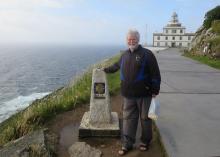
Alvin Thiessen completed the 800-kilometre pilgrimage on the Camino de Compostela. He reached the Cape of Fisterra, on the Atlantic coast, 90 kilometres past the city of Santiago de Compostela. (Photo by Alvin Thiessen)
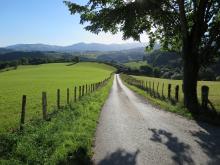
Alvin Thiessen started his pilgrimage from Saint Jean Pied de Port, France, and tackled the Pyrenees Mountains on the first day. (Photo by Alvin Thiessen)
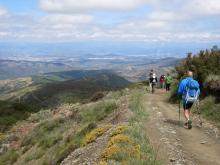
Pilgrims walk the highest point along the Camino, looking down towards Molinaseca, Spain. (Photo by Alvin Thiessen)
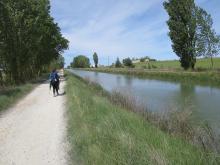
The Camino de Santiago path runs along a canal close to Carrion De Los Condes, Spain. (Photo by Alvin Thiessen)

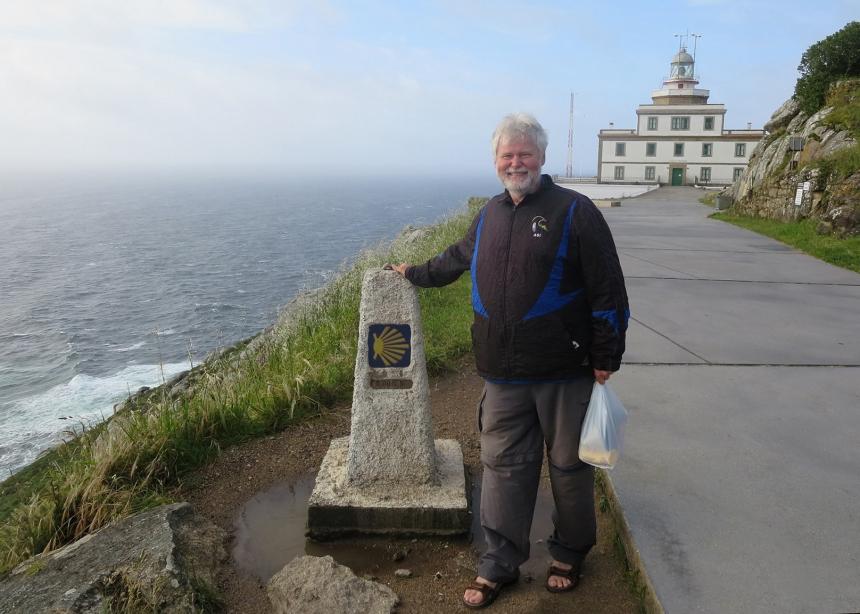

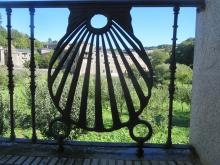
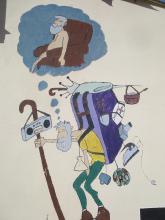
Comments
Alvin, I really enjoyed reading about your walk.
I learned a lot about how you coped with each day.
God was with you every step of your journey.
Thanks,
Aunt Anne
I too walked the same route in the summer of 2017, after I retired. I enjoyed it so much I'm going again this summer. I related to many things that you talked about in your post. Thanks for sharing it. The link was shared in the Edmonton Canadian Company of Pilgrims Chapter Newsletter.
Add new comment
Canadian Mennonite invites comments and encourages constructive discussion about our content. Actual full names (first and last) are required. Comments are moderated and may be edited. They will not appear online until approved and will be posted during business hours. Some comments may be reproduced in print.